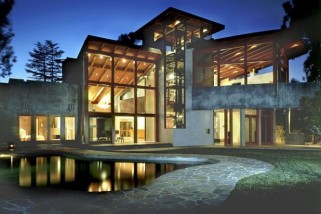
Source: GoLights
Concrete is not just the latest trend in flooring. It extends past designer kitchen bench tops and polished decorative planters. Concrete is now one of the most popular materials used by object and lighting designers and interiors decorators around the world.
For homes that have an industrial edge, using concrete lighting just makes sense. If you want to exude a raw, industrial feel in your home you want to incorporate industrial materials into the overall design of your interior and lighting is one of the most important elements you need to consider.
There’s no doubt that concrete and lighting make for a unique and unexpected pairing of which an Australian designer was the first to consider.

Source: GoLights
Paul Mulhearn is the founding director and designer at Viore design. It was Viore who were the first in the marketplace to offer a range of concrete pendant lights.
Coming in a range of three different sizes, plus a conical-shaped pendant, Viore’s original concrete pendants are ideally used in homes with high ceilings, where they can either be grouped together, spaced evenly or clustered over a dining area in different shapes, sizes and lengths.
Each light features a beautifully textured concrete exterior with anodised silver interior and polished chrome finishing touches.

Source: GoLights
The Australian lighting company, Viore continues to enjoy working with concrete as a medium and expects to continue to use it in the future with upcoming releases.
These concrete pendant lights certainly have an organic, natural feel to them, which means they not only work well in industrial-inspired homes but also in minimalistic, Scandinavian-inspired and almost any home or apartment with a neutral colour palette.
Because these concrete pendants have such timeless appeal, they make the perfect investment for redecorating home owners.

Source: GoLights
Since learning more about the Viore Design concrete pendants, I’ve started noticing not only concrete lights, but concrete home wares and furniture items too. From side boards to chairs (I’m not sure how comfortable they’d be) to dining tables and even office desk accessories there’s really no limit to how concrete can be used.
One things for sure, this trend of using concrete not only outside the home but inside too is not something that appears to be fading fast. If anything, I expect we’ll be seeing designers coming up with more ways to use concrete for a range of interior design projects for years to come.
- Top-Five Farm Gate Signs Ideas - August 17, 2022
- How Smart Homes are Impacting the Interior Design Industry - January 10, 2022
- 7 Ways to Make Your Home More Handicap Accessible - January 10, 2022











